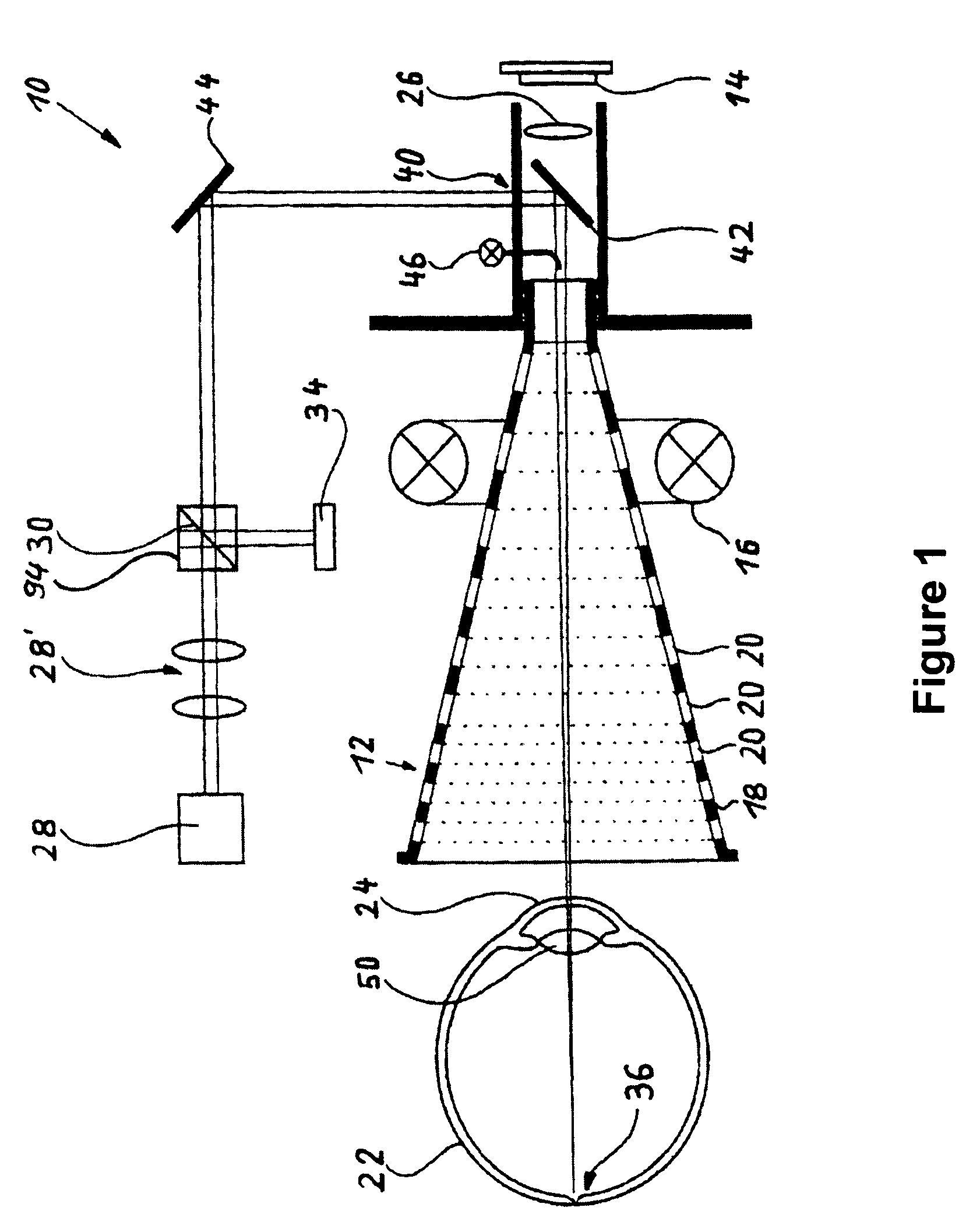Method and an apparatus for the simultaneous determination of surface topometry and biometry of the eye
a biometric and eye surface technology, applied in the field of methods and apparatuses for simultaneous determination of surface topometry and eye biometrics, can solve problems such as inability to perform physiological tests, and achieve the effects of detecting optical properties, detecting optical properties, and precise optical properties
- Summary
- Abstract
- Description
- Claims
- Application Information
AI Technical Summary
Benefits of technology
Problems solved by technology
Method used
Image
Examples
Embodiment Construction
[0029]The apparatus, which is shown in FIGS. 1, 3 and 4 and is shown in its entirety with reference numerals 10 and 10′, principally consists of two components, namely (1) a Placido Topometer with a Placido cone 12 with a random aperture angle, a CCD array 14 and an annular lamp 16 for illuminating the outside wall of the cone 18, and (2) a wave front analyzer, as shown in FIG. 1, or an optical coherence tomography, as shown in FIGS. 3 and 4.
[0030]A number of annularly extending apertures 20 are provided on the outside wall 18 of the Placido cone 12. Note that only a limited number of apertures are shown herein for illustration purposes. Light produced by the annular lamp 16 can pass through such apertures, so as to project a known pattern on an eye 22, or more specifically a cornea 24, to be examined. The annularly extending apertures 20 can concern slots in the simplest of cases, so that the projected rings are monochromatic. It is also possible to introduce various nets or grids ...
PUM
 Login to View More
Login to View More Abstract
Description
Claims
Application Information
 Login to View More
Login to View More - R&D
- Intellectual Property
- Life Sciences
- Materials
- Tech Scout
- Unparalleled Data Quality
- Higher Quality Content
- 60% Fewer Hallucinations
Browse by: Latest US Patents, China's latest patents, Technical Efficacy Thesaurus, Application Domain, Technology Topic, Popular Technical Reports.
© 2025 PatSnap. All rights reserved.Legal|Privacy policy|Modern Slavery Act Transparency Statement|Sitemap|About US| Contact US: help@patsnap.com



